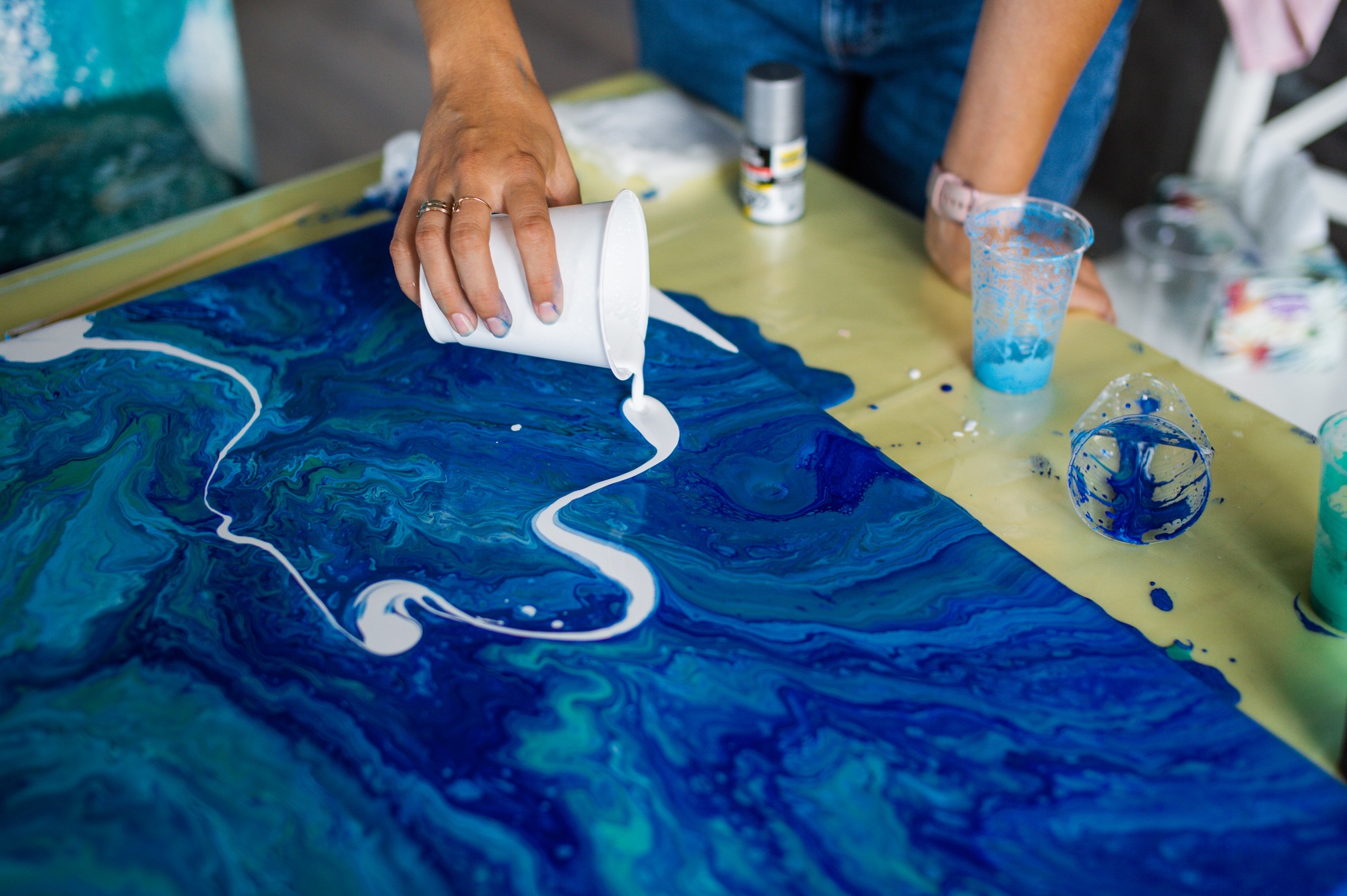Key Takeaways

- Understand NFTs: NFTs are unique digital certificates that authenticate ownership of specific items, significantly appealing for artists, creators, and businesses looking to monetize their work.
- Types of NFTs: Recognize the different categories of NFTs, including art, collectibles, music, virtual real estate, and domain names, to align your creation with your brand’s goals.
- Choose the Right Platform: Selecting the right blockchain platform (like Ethereum or Polygon) is crucial, as it impacts transaction fees, functionalities, and market reach for your NFTs.
- Design and Mint Your NFT: Create high-quality digital assets tailored to your target audience before minting them on chosen marketplaces, following all necessary guidelines.
- Effective Marketing: Promote your NFTs across various platforms, optimize listings for searchability, and engage your audience through social media and collaborations to drive sales.
- Avoid Common Mistakes: Be aware of copyright laws and set realistic prices to enhance the chances of success while preventing legal issues and discouraging potential buyers.
Diving into the world of NFTs can feel overwhelming, but creating your own non-fungible token is easier than you think. As digital assets continue to gain popularity, understanding how to make an NFT can open up exciting opportunities for artists, creators, and entrepreneurs alike. Whether you’re looking to showcase your art or monetize a unique digital creation, this guide will walk you through the essential steps to get started.
Understanding NFTs

NFTs represent a new frontier in digital assets, offering unique ownership for creators and businesses alike. Understanding NFTs is essential for small businesses looking to leverage technology and engage with their audience.
What Are NFTs?
NFTs, or non-fungible tokens, are digital certificates that authenticate ownership of a unique item or piece of content on the blockchain. Unlike cryptocurrencies, which are interchangeable, NFTs are distinct and cannot be exchanged on a one-to-one basis. This uniqueness grants value, making NFTs highly appealing for artists, small businesses, and entrepreneurs seeking to monetize their work or build brand presence in the digital landscape.
Types of NFTs
- Art NFTs: Digital art pieces sold as NFTs include paintings, animations, and interactive art, providing artists with royalties on resale.
- Collectibles: Items such as trading cards, virtual pets, or game assets are commonly sold as NFTs, catering to collectors and fans.
- Music NFTs: Musicians can offer music tracks, albums, or exclusive experiences directly to fans, enhancing revenue streams and control.
- Virtual Real Estate: Digital land or property in metaverse platforms, sold as NFTs, allow for development and creativity in virtual spaces.
- Domain Names: Unique website addresses registered as NFTs offer digital identity and ownership on the blockchain.
Understanding these types helps small businesses decide which NFT aligns with their brand and audience. You can explore these options to innovate marketing strategies and create value in the digital realm.
Preparing for NFT Creation

Preparing for NFT creation involves several crucial steps that set the stage for successful digital asset deployment. Understanding these steps ensures that your NFT creation process aligns with your small business goals.
Choosing the Right Platform
Choosing the right platform is essential for minting your NFT. Popular options include Ethereum, Polygon, and other EVM-compatible chains. Each platform comes with unique fees and functionalities, making it critical to evaluate which one matches your technical capabilities and business objectives. For example, Ethereum offers extensive marketplaces and established credibility, while Polygon provides lower transaction fees and faster processing times. Your choice of platform impacts both cost and reach, so analyze each option based on your specific needs.
Setting Up a Digital Wallet
Setting up a digital wallet is a vital step in the NFT creation process. A digital wallet stores your NFTs and cryptocurrency, enabling transactions within the selected blockchain ecosystem. Choose a wallet that supports the blockchain you’ve selected; popular choices include MetaMask and Trust Wallet. Ensure that you securely back up your wallet, as losing access means losing your NFTs and funds. A well-managed digital wallet streamlines your NFT transactions and secures your assets, making it an essential tool for any small business venturing into the world of NFTs.
Creating Your NFT

Creating your NFT involves strategic design and careful minting. This process allows small businesses to tap into the growing tech space of digital assets, enhancing brand presence and engaging with customers.
Designing Your Digital Asset
- Define Your Concept:
Decide on the type of digital asset you want to create. Options include art, music, video, or virtual goods. Identify your target audience, unique features, and value proposition to set your NFT apart.
- Create the Digital Asset:
Utilize suitable software for your asset creation. For instance:
- Digital art: Use Adobe Photoshop, Illustrator, or Procreate.
- Music: Utilize DAWs like Ableton Live, FL Studio, or Logic Pro.
- Videos and animations: Leverage Adobe Premiere Pro, After Effects, or Blender.
- 3D models and virtual goods: Apply Blender, Autodesk Maya, or Unity.
- Ensure Quality and Originality:
Focus on creating high-quality content. Original designs attract more attention and retain value in the competitive NFT market.
Minting Your NFT
- Choose the Right Blockchain:
Select a blockchain that aligns with your business goals. Ethereum and Polygon are popular choices due to their robust functionalities and established marketplaces.
- Set Up a Digital Wallet:
Create a digital wallet to securely store your NFTs and cryptocurrency. This wallet facilitates transactions within the blockchain and protects your investments.
- Select a Marketplace:
Research and choose an NFT marketplace that suits your needs. Marketplaces like OpenSea, Rarible, or Mintable offer various features and fee structures, allowing you to find the best fit for your small business.
- Mint Your NFT:
Once you’ve prepared everything, mint your NFT by uploading your digital asset to the chosen marketplace and completing any necessary transactions. Follow the platform’s guidelines to ensure successful creation.
- Promote Your NFT:
Market your NFT on social media, through newsletters, or by engaging with your existing customer base. Leveraging your audience helps build anticipation and potential sales for your digital asset.
By following these steps, small businesses can effectively create and mint NFTs, harnessing the potential of technology and digital assets to engage their audience innovatively.
Selling and Marketing Your NFT

Selling and marketing your NFT effectively is crucial for maximizing your investment. Utilize the following strategies to reach your target audience and drive sales.
Listing on NFT Marketplaces
List your NFT on popular marketplaces like OpenSea, Rarible, and Foundation. These platforms offer vast audiences, increasing visibility for your digital asset. Set competitive prices based on similar works and consider auction formats to create demand. Ensure to optimize your listing with detailed descriptions and tags relevant to your artwork. This will enhance discoverability and attract potential buyers who appreciate your unique offerings.
Promoting Your NFT
Promote your NFT across social media platforms, forums, and your small business website. Use channels like Twitter, Instagram, and Discord to engage with the NFT community. Share behind-the-scenes content, creation stories, and the value of your digital asset. Collaborate with influencers in the space to expand reach and credibility. Leverage email newsletters to inform your existing customer base about your NFT launch. Staying connected with tech-savvy audiences increases the chances of your NFT gaining traction and achieving sales success.
Common Mistakes to Avoid

Navigating NFT creation comes with challenges. Avoiding common mistakes enhances your chances for success in this digital asset space.
Misunderstanding Copyright
Understand copyright laws before minting NFTs. You must own the rights to the digital assets you create or use. If you don’t have rights, you risk legal consequences and losing your investment. Small businesses should conduct thorough research on copyright issues to ensure compliance. Always obtain proper licensing when using third-party art or music for your NFTs.
Overpricing Your NFT
Set realistic prices for your NFTs. Overpricing can deter potential buyers. Consider the uniqueness and quality of your digital asset when determining value. Research similar NFTs on platforms like OpenSea and Rarible to gauge appropriate pricing. Small businesses should balance profit margins with competitiveness to attract buyers while maximizing sales potential.
Conclusion

Creating your own NFT opens up a world of possibilities for showcasing your creativity and engaging with your audience. By understanding the essential steps and strategies outlined in this guide, you can navigate the NFT landscape with confidence.
Remember to focus on originality and quality in your digital assets while carefully choosing the right platform and marketplace for minting and selling. With effective marketing techniques, you can enhance your visibility and connect with potential buyers.
Avoid common pitfalls by being aware of copyright issues and setting realistic prices. Embracing the potential of NFTs can not only elevate your brand but also position you at the forefront of the digital asset revolution. Start your journey today and unlock new opportunities in the ever-evolving world of NFTs.
Frequently Asked Questions

What are non-fungible tokens (NFTs)?
NFTs are unique digital certificates that prove ownership of a specific asset on the blockchain. Unlike cryptocurrencies, which are interchangeable, each NFT represents a one-of-a-kind item, allowing artists and creators to monetize their digital works.
How do I create my own NFT?
Creating an NFT involves several steps: choose a blockchain platform (like Ethereum or Polygon), set up a digital wallet, create your digital asset, and mint your NFT on a marketplace. Following these steps ensures your NFT is ready for sale.
What types of NFTs can I create?
You can create various types of NFTs, including digital art, music, collectibles, virtual real estate, and domain names. Each type offers different opportunities for monetization and is suitable for different audiences.
What platforms can I use to mint NFTs?
Popular platforms for minting NFTs include Ethereum and Polygon, each offering distinct features and fee structures. Choose a platform that aligns with your goals and technical capabilities.
How do I sell my NFT?
To sell your NFT, list it on a recognized marketplace like OpenSea, Rarible, or Foundation. Set competitive prices, optimize your listings with descriptions and tags, and promote them through social media to increase visibility.
What are common mistakes when creating NFTs?
Common mistakes include misunderstanding copyright laws and setting unrealistic prices. Ensure you own the rights to digital assets and conduct thorough research on pricing by evaluating similar NFTs to avoid legal issues and maximize success.
How can small businesses benefit from NFTs?
Small businesses can use NFTs to engage their audience innovatively, create unique marketing strategies, and enhance brand presence in the digital environment. NFTs offer a new revenue stream and a way to connect with tech-savvy consumers.
How important is marketing in selling NFTs?
Marketing is crucial for selling NFTs. Effective strategies include optimizing listings, utilizing social media, engaging in NFT communities, and collaborating with influencers. These actions help boost your NFT’s visibility and increase the likelihood of sales.
Image Via Envato



